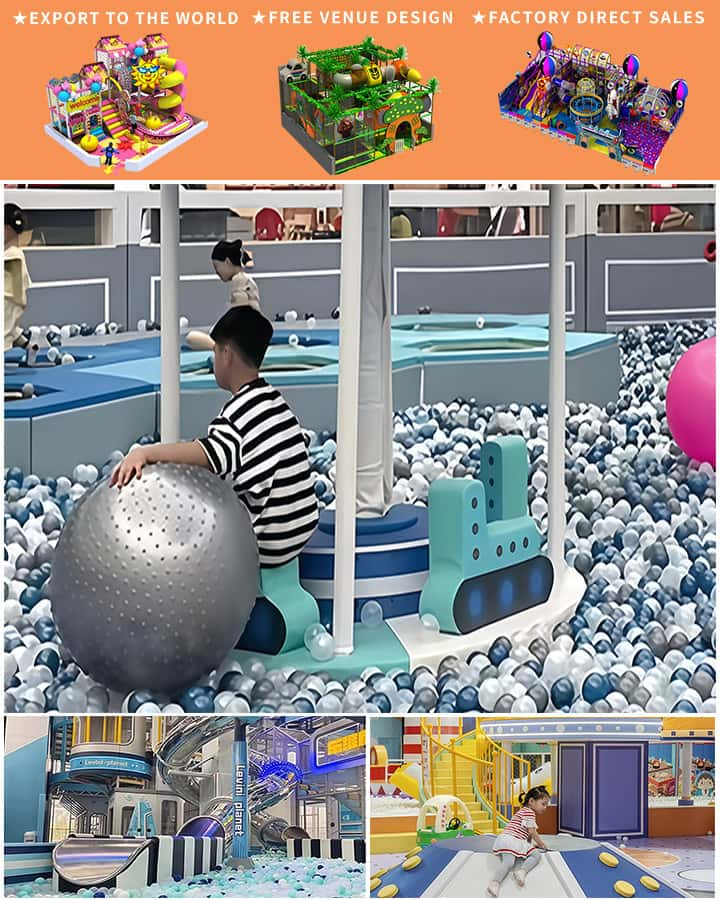In today’s fast-paced world, creating a safe and engaging indoor environment for children has become increasingly essential. Whether you’re designing a playroom at home or seeking to add excitement to a daycare center, residential indoor playground equipment offers endless possibilities for fun and development. This guide will explore the various types of equipment available, their benefits, safety considerations, and tips for creating an ideal indoor playground space.
Types of Residential Indoor Playground Equipment
Residential indoor playground equipment comes in a variety of shapes, sizes, and functionalities to cater to different age groups and interests. Here are some popular options:
Climbing Structures: These structures, including climbing walls, ropes, and ladders, help develop children’s motor skills, coordination, and confidence. They also encourage physical activity and can be tailored to suit various skill levels.
Slides: From simple plastic slides to elaborate spiral designs, slides offer thrilling fun while promoting balance and spatial awareness. They are suitable for all ages but should be chosen based on the child’s size and ability.
Trampolines: Indoor trampolines provide an excellent cardiovascular workout and improve balance and flexibility. Safety nets and enclosures can ensure secure jumping sessions.
Playhouses and Forts: These imaginative play areas allow children to engage in role-playing activities, fostering creativity and social skills. Themed playhouses can add an extra layer of excitement.
Bounce Houses: Compact indoor bounce houses are perfect for energetic kids who need a space to burn off excess energy. They come in various designs and themes, ensuring hours of bouncing fun.
Interactive Toys and Games: Incorporating interactive elements such as sensory toys, puzzle boards, and digital games can enhance cognitive development and keep children entertained for extended periods.

Benefits of Residential Indoor Playground Equipment
Investing in indoor playground equipment offers numerous advantages beyond mere entertainment:
Physical Health: Regular play on climbing structures, slides, and trampolines promotes physical fitness, helping children maintain a healthy weight and develop strong muscles and bones.
Mental Development: Engaging with interactive toys and imaginative play structures stimulates cognitive growth, enhancing problem-solving skills, creativity, and emotional resilience.
Social Skills: Group play encourages teamwork, communication, and empathy. Shared experiences in a playground setting help children learn to cooperate and resolve conflicts amicably.
Safety: A well-designed indoor playground is a controlled environment where parents can supervise their children more easily compared to outdoor settings. This minimizes exposure to weather-related risks and potential injuries from unsupervised activities.
Safety Considerations
While indoor playgrounds offer many benefits, safety remains a top priority. Here are some crucial factors to consider:
Age Appropriateness: Ensure that the equipment is suitable for the child’s age and developmental stage. Mismatched equipment can pose safety hazards and limit the enjoyment of playtime.
Quality Materials: Choose durable, non-toxic materials to prevent wear and tear and avoid harmful chemicals. Reputable manufacturers often provide certifications to guarantee product safety.
Supervision: Adult supervision is vital to prevent accidents and teach children how to use each piece of equipment correctly. Always monitor playtime closely, especially for younger children.
Installation: Proper installation is critical for maintaining equipment stability and preventing accidents. Follow the manufacturer’s guidelines meticulously and conduct regular maintenance checks.
Creating an Ideal Indoor Playground Space
Designing an indoor playground requires careful planning to maximize space utilization and ensure a safe, enjoyable environment:
Assess Available Space: Determine the dimensions of your indoor area and choose equipment that fits comfortably without overcrowding. Leave sufficient space for movement around each item.
Consider Layout: Arrange equipment to create a logical flow, allowing children to move freely from one activity to another. Incorporate zones for active play, quiet time, and interactive learning.
Add Comfort Elements: Include soft flooring or mats to cushion falls and reduce noise. Add bean bags, pillows, or small seating areas for rest breaks.
Personalize the Space: Decorate the playground with your child’s favorite colors, theme, or characters to make it more inviting and stimulating. Personal touches can enhance the overall experience and encourage more imaginative play.
In conclusion, residential indoor playground equipment provides a fantastic opportunity to combine fun, fitness, and development in a safe, controlled environment. By selecting appropriate gear, prioritizing safety, and thoughtfully designing the space, you can create an indoor oasis that delights children and gives parents peace of mind. Whether you’re revamping a playroom or building a comprehensive indoor playground, these tips will guide you toward creating a joyful and beneficial play area for children of all ages.




